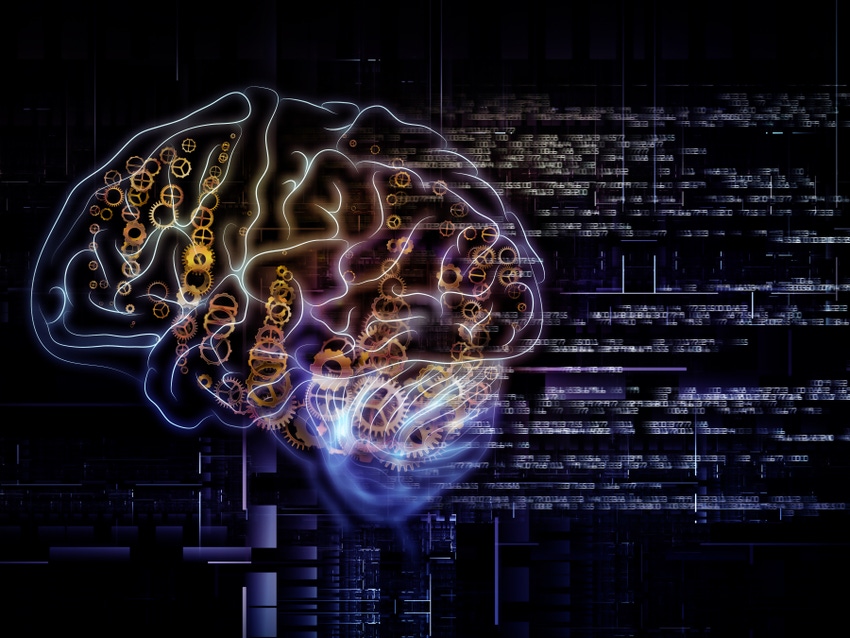April 18, 2017

Here's the second article in Maciej Kranz's three part series exclusively for AI Business on how AI and IoT are changing the world of business. Without further ado, here’s the second part of this exciting three part series.
[caption id="attachment_7239" align="alignleft" width="300"] Maciej Kranz, author and Vice President of the Corporate Strategic Innovation Group at Cisco Systems.[/caption]
Maciej Kranz, author and Vice President of the Corporate Strategic Innovation Group at Cisco Systems.[/caption]
Maciej Kranz is a business leader, frequent keynote speaker, and the author of the New York Times Best Seller, Building the Internet of Things. Kranz brings 30 years of computer networking experience to his current position as Vice President of the Corporate Strategic Innovation Group at Cisco Systems.
Artificial intelligence promises a brave new world of computers that can plan, strategise, evaluate options, calculate probabilities, and make smart decisions. But to actually do anything, AI needs the Internet of Things (IoT). You might say that IoT is the body that gives AI’s brain the ability to act. IoT also provides the data AI needs in order to make smart decisions. Just as our eyes, ears, nose, and skin sense the world around us and send that information to the brain to process, billions of sensors and cameras in the Internet of Things gather vast amounts of environmental and operational data to be sorted, analysed and turned into actionable insights by AI. In return, some of these insights and decisions can then be acted upon by IoT and end devices such as robots, drones and industrial machines.
It is this remarkably synergistic relationship that is generating hundreds of billions—some say trillions—of dollars in value globally over the next five to 10 years. In this second installment of my three-part series on AI and IoT, I’ll dive deeper into why IoT is such a powerful partner to AI in creating business value. Let’s start by looking at four categories of IoT use cases that are most commonly implemented today. For many companies, they are fast paths to IoT payback:
Connected operations: With smart and connected warehouse operations, Amazon workers no longer have to roam the warehouse picking goods off the shelves to fulfil an order. Instead, shelves whisk down the aisles, guided by small robotic platforms that deliver the right inventory to the right place, avoiding collisions along the way. Order fulfilment is faster, safer, and more efficient.
Remote operations: Global shipping line Maersk manages its far-flung collection of shipping containers with sensors that monitor their location and whether they are full or empty—enabling the company to route them efficiently to where they will next be needed. The system also tracks temperature, CO2 and oxygen levels inside refrigerated containers to maintain the integrity of the contents and make the delivery and check-out process faster. This IoT and AI supply chain strategy has so far saved the company $100 million.
Predictive analytics: Global engineering giant Siemens, in partnership with the analytics firm Teradata, took on a project to demonstrate that high-speed rail can really compete with airlines, focusing first on the route between Madrid and Barcelona. This train is able to run at about 200 miles per hour– an attractive option for commuters. The company leveraged IoT data coming from trains, tracks, and external weather sources to predict and optimise on-time arrivals. With an on-time arrival guarantee, the train has claimed 60 percent of airline customers taking the same route.
Preventive maintenance: French power supplier Enedis uses big data and analytics to prevent outages throughout its network of more than 400,000 generators. The power operator collects large volumes of IoT data from smart meters and sensors on the network and combines it with weather information and 10 years of historical outage records. Using all this structured and unstructured data, the company has developed learning systems to predict when and where there is a significant probability of failure, and to recommend the specific maintenance that should be performed in order to prevent it.
These four scenarios are well-proven candidates to help companies get started on IoT+AI projects. Armed with an early success, they can then build momentum and begin to tackle more transformative solutions. Here there are rich opportunities across many domains, including:
New business opportunities and revenue streams — One example is Guardhat, a maker of smart connected hardhats that use sensors, cameras, analytics, and other technologies to help workers find their way through dark or dangerous conditions, avoid collisions with moving equipment, and stay out of hazardous areas. This AI-enabled product combined with its cloud-based system can be used in multiple environments including oil & gas, mining, construction, manufacturing, and other industries.
New business models — Japanese industrial equipment maker FANUC uses “near-zero touch” capabilities to collect data from its machines, transforming itself from manufacturer into a data mining AI + IoT business. Remote monitoring, analytics and predictive maintenance services reduce customer costs and improve production uptime. General Motors reported that even though so far they have connected only some of their 33,000 FANUC robots to the AI system, they have already prevented approximately100 incidents on their assembly lines in the last two years. With each line stoppage costing the company $1-2 million, you can do the math.
New business structures — In many traditional industries, customers have typically looked to a single vendor for a complete end-to-end solution—often using closed, proprietary technologies. Today IoT, with its flexibility, cost, and time-to-market advantages, is driving a shift to an open technology model where solution and technology providers together with customers form an ecosystem of partners. In this collaborative “co-economy,” IoT and AI capabilities are pulled into customer-facing solutions by multiple players offering best-in-class capabilities.
New value propositions for consumers — IoT is helping companies provide new hyper-relevant customer experiences and faster, more accurate services than ever before. In healthcare, for example, remote monitoring capabilities can provide in-home diagnostics and prompt patients to take their medication. A 24x7 stream of real-time data reduces the need for elderly or disabled patients to visit the hospital, while alerting caregivers when an intervention is needed.
Acting as the body to AI’s brain, IoT today provides both input (data) and output (action) for the smart computing and analytics function of a centralised AI system. In the future, I would expect the AI systems to become decentralised as well. In fact, the U.S. military is already experimenting with using “swarms” of drones that communicate with each other on the fly and collaborate to devise the best way to accomplish their collective mission.
In my next installment, I’ll take a closer look at why AI and IoT are natural partners, and at some of the technologies and business dynamics that are propelling their fast-growing applications.
by Maciej Kranz
Keep a lookout for Maciej’s final part of his three part series for AI Business in two weeks time.
What do you think? Join our discussion at the new Building the Internet of Things network.
To receive my new Building the Internet of Things newsletter, subscribe here.
About the Author(s)
You May Also Like
.jpg?width=700&auto=webp&quality=80&disable=upscale)
.jpg?width=700&auto=webp&quality=80&disable=upscale)
.jpg?width=700&auto=webp&quality=80&disable=upscale)
.jpg?width=300&auto=webp&quality=80&disable=upscale)
.jpg?width=300&auto=webp&quality=80&disable=upscale)
.jpg?width=300&auto=webp&quality=80&disable=upscale)

